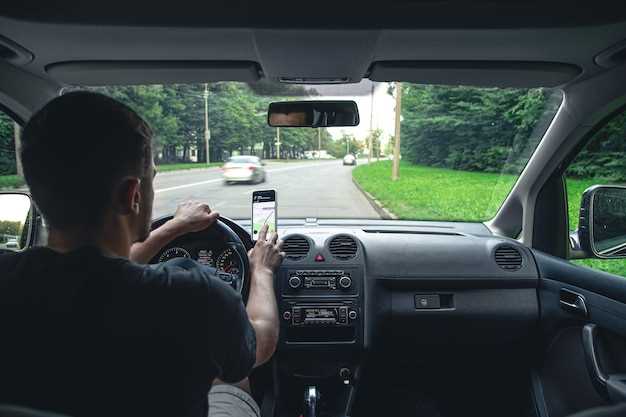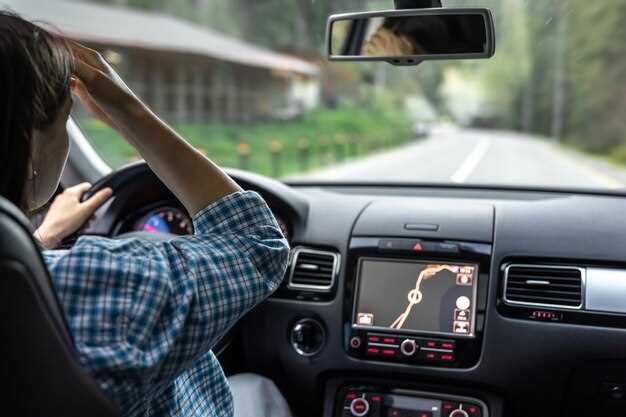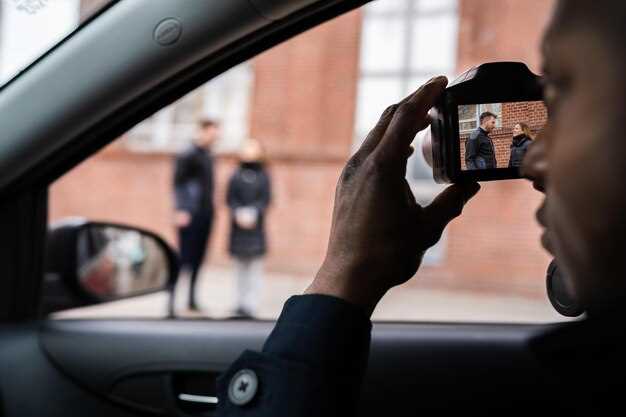
In today’s fast-paced driving environment, the ability to park safely and confidently is crucial. Toyota’s backup camera technology serves as a valuable tool for drivers, significantly enhancing visibility while reversing. With obstacles and pedestrians often hidden from view, this innovative feature eliminates blind spots, allowing for safer maneuvering in tight spaces.
When engaging reverse gear, the backup camera activates, providing a clear view of the area behind the vehicle. This visual aid not only highlights potential hazards but also assists in accurate parking, making it easier to align the vehicle within designated spaces. The integration of this technology demonstrates Toyota’s commitment to prioritizing safety and convenience, ensuring that drivers are well-equipped to handle various parking scenarios.
With features such as grid lines and adjustable camera angles, Toyota’s backup camera goes beyond basic visibility. It empowers drivers to make informed decisions while reversing, reducing the likelihood of accidents and enhancing the overall driving experience. As the importance of safety continues to rise, adopting such advanced features becomes essential for all vehicle owners.
Understanding the Technology Behind Toyota’s Reverse Camera System

Toyota’s reverse camera system is an advanced safety feature designed to enhance visibility when backing up. The system utilizes a wide-angle camera mounted at the rear of the vehicle to provide a clear view of the area directly behind the car. This technology is essential for preventing accidents and ensuring the safety of both the driver and pedestrians.
The reverse camera activates automatically when the vehicle is put into reverse gear. The live video feed from the camera is displayed on the vehicle’s infotainment screen, allowing the driver to see obstacles that may be in their path. This feature significantly reduces blind spots, especially in larger vehicles where visibility can be limited.
Equipped with a high-resolution camera, the system captures a broader field of view compared to standard rearview mirrors. Moreover, many models come with dynamic guidelines, which assist the driver in estimating the trajectory of the vehicle as they reverse. These guidelines adjust according to the steering angle, providing a more intuitive driving experience.
In addition to the visual benefits, Toyota’s reverse camera system can also integrate with other safety technologies, such as parking sensors. Together, these features offer comprehensive support during maneuvering, making it easier to navigate tight spaces and reduce the likelihood of collisions.
Overall, the reverse camera system showcases Toyota’s commitment to safety and innovation, ensuring that drivers have the necessary tools to enhance their situational awareness while reversing.
Step-by-Step Guide to Using the Backup Camera for Safe Parking

Using Toyota’s backup camera can greatly enhance safety and accuracy while parking your vehicle. Follow these steps to effectively utilize the reverse camera for a smooth parking experience.
1. Prepare for Reversal: Before putting your vehicle in reverse, ensure the area behind your car is clear of obstacles. Check your surroundings for pedestrians or other cars to avoid accidents.
2. Engage the Reverse: Shift your vehicle into reverse. This action will activate the backup camera automatically. The camera feed will appear on the dashboard screen, providing a clear view of the area behind your Toyota.
3. Observe the Guidelines: Once the camera is active, pay close attention to the on-screen guidelines. These lines help you judge the distance to obstacles and assist in aligning your vehicle for parking.
4. Use the Camera View: As you begin to reverse, continually monitor the camera feed. Adjust your steering gradually based on what you see on the screen. The camera allows you to have a wider field of view, making it easier to spot hidden objects.
5. Control Speed: Maintain a slow and controlled speed while reversing. This will give you ample time to react to any objects or obstacles that may appear in the camera’s view.
6. Check Blind Spots: While the backup camera provides crucial information, also glance over your shoulder to check blind spots. Relying solely on the camera may not catch everything in your immediate vicinity.
7. Complete the Parking Maneuver: Once you’ve aligned your vehicle with the parking space, shift from reverse to drive when you are ready to complete the maneuver. Make sure to keep an eye on the camera feed until your vehicle is securely parked.
By following these steps, you can effectively use the backup camera to enhance your parking experience and ensure safety while reversing your Toyota.
Troubleshooting Common Issues with Toyota’s Reverse Camera
Toyota’s reverse camera is a valuable tool for enhancing safety while parking, but issues can sometimes arise. One common problem is a blank or black screen when the vehicle is in reverse. This may occur due to a blown fuse or a disconnected wire. Checking the fuse box and inspecting the wiring can help identify the cause.
Another frequent issue involves distorted or unclear images on the screen. This can happen if the camera lens is dirty or obstructed. Regularly cleaning the camera lens can improve visibility. Additionally, ensure that nothing is blocking the camera’s view during reverse maneuvers.
If the guidelines intended to assist with parking are inaccurate or misaligned, it may be necessary to recalibrate the camera system. Refer to the vehicle’s manual for detailed instructions on how to perform this adjustment.
In some cases, the reverse camera may fail to activate entirely. This could be linked to software glitches or electronic malfunctions within the infotainment system. Restarting the vehicle or performing a system reset can sometimes resolve these issues.
If problems persist after troubleshooting, it is advisable to consult a certified Toyota technician. They can conduct a thorough diagnostic to ensure the reverse camera functions correctly, enhancing your parking experience.




